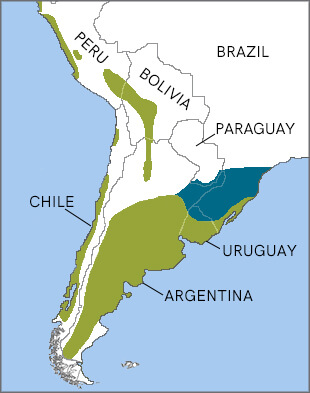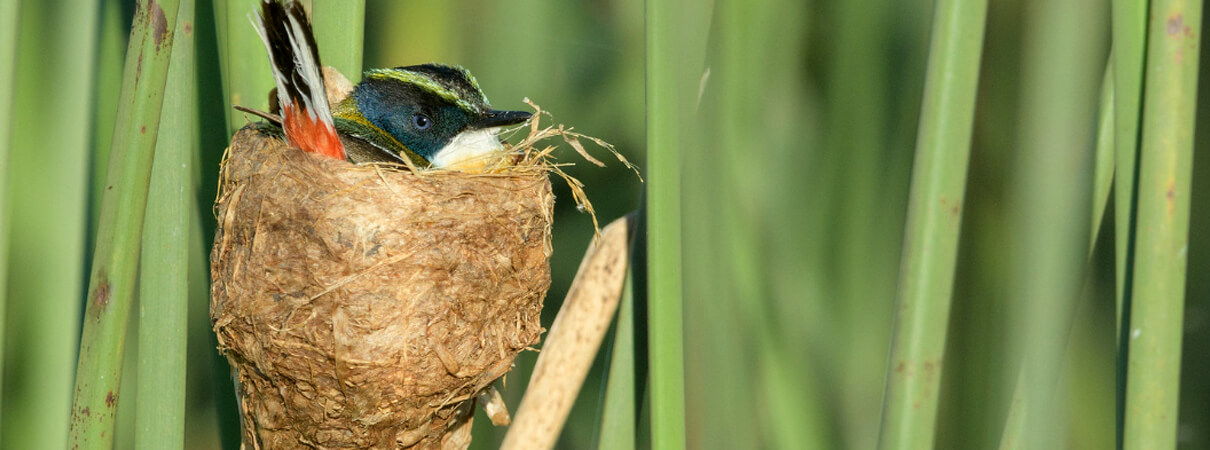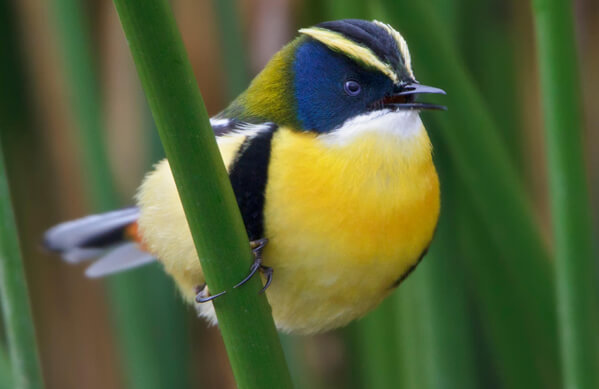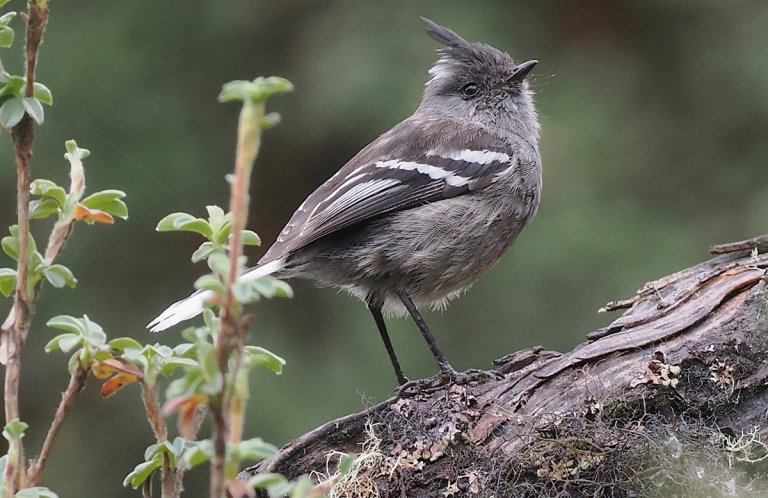
Many-colored Rush Tyrant range map, Birds of North America, https://birdsna.org, maintained by the Cornell Lab of Ornithology.
The Many-colored Rush-Tyrant is one of the most striking members of the Tyrannidae family, a group of birds infamous for rather drab-colored species such as the Santa Marta Bush-Tyrant, Ochraceous Attila, and Olive-sided Flycatcher. Smaller than a Carolina Chickadee, the rush tyrant is also among the most diminutive of its family.
The Many-colored Rush-Tyrant's bold patterning and bright plumage give rise to its Spanish nickname siete colores (seven colors), a moniker shared by other beautiful but unrelated bird species found in the Americas.
Birds of Seven Colors
The lovely Painted Bunting is one of the species that shares the nickname siete colores with the Many-colored Rush-Tyrant. This vividly colored songbird is a member of the diverse Cardinalidae family, related to birds ranging from the Scarlet Tanager to the Dickcissel.
Unlike the sedentary Many-colored Rush-Tyrant, the Painted Bunting is a Neotropical migrant that breeds in the U.S. and Mexico and winters in Mexico, Central America, and the Caribbean.
Further complicating matters regarding siete colores, there is also a Brazilian tanager named the Seven-colored Tanager; that bird is related to the Green-headed Tanager, which has the nickname of “seven-colored tanager” (saíra-sete-cores) in Portuguese! A songbird of Amazonia, the Paradise Tanager is also locally called siete colores, as is the Scarlet Macaw in Bolivia.
A Singing Tyrant
This bright flycatcher is the only member of its genus. There are four recognized subspecies of Many-colored Rush-Tyrant, divided by range, size, and color differences. In Bolivia, it is considered a highland species, but other subspecies are found on the west and east sides of southern South America. Another subspecies is found in coastal Peru.
Many-colored Rush-Tyrants have long legs for their size, as well as strong feet. Both of these attributes are adaptations for navigating the reeds and rushes these birds live among in their marshy surroundings.
This bird's rich, musical song is also unusual for a flycatcher. Most other birds in this family have sharp, unmelodic calls and songs.
Song:
(Audio of Many-colored Rush Tyrant song by Jeremy Minns, XC81720. Accessible at www.xeno-canto.org/81720)
Call:
(Audio of Many-colored Rush Tyrant call by Jeremy Minns, XC81721. Accessible at www.xeno-canto.org/81721)
The Many-colored Rush-Tyrant does resemble other tyrant flycatchers in its diet, feeding on insects and other small invertebrates found in its marshy habitat. An active forager, it scours marsh plants, hops onto floating mats of vegetation, and scrambles up and down vertical stems in pursuit of prey. It also makes short mid-air sallies, leaving cover to grab flying insects.
Nesting Stability
Although the Many-colored Rush-Tyrant's courtship behavior is not well studied, it is thought to include aerial displays, posturing, and songs. While displaying, the bird raises its crown feathers to reveal a red tuft on its head. A mated pair defends a territory, where it may raise several broods per season.

Many-colored Rush-Tyrant on nest by Javier Parigini
The female builds her cone-shaped nest of wet vegetation, fastened on one side to a single reed stalk. As the nest dries, it stiffens, providing stability as the marsh vegetation supporting it sways in the wind. The nest is well-hidden and usually built over the water for additional protection from predators.
Although the female does most of the brooding of the two to three eggs, the chicks are fed by both parents until they fledge.
Managing Marshland
Although the Many-colored Rush-Tyrant is widespread and considered common, it faces threats common to many birds that share its marshy haunts, including habitat loss and water pollution.
At Peru's Lake Junín, ABC has supported partner group ECOAN's efforts to improve the management of the lake and surrounding wetlands for Endangered species such as the Junín Grebe — work that also benefits the Many-colored Rush-Tyrant and other birds. This project and others will help ensure that this "siete colores" and its biologically diverse ecosystems remain for generations to come.
Donate to support ABC's conservation mission!



















































